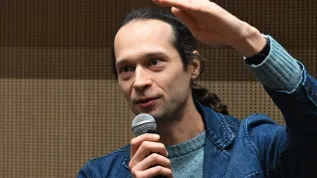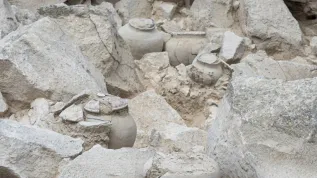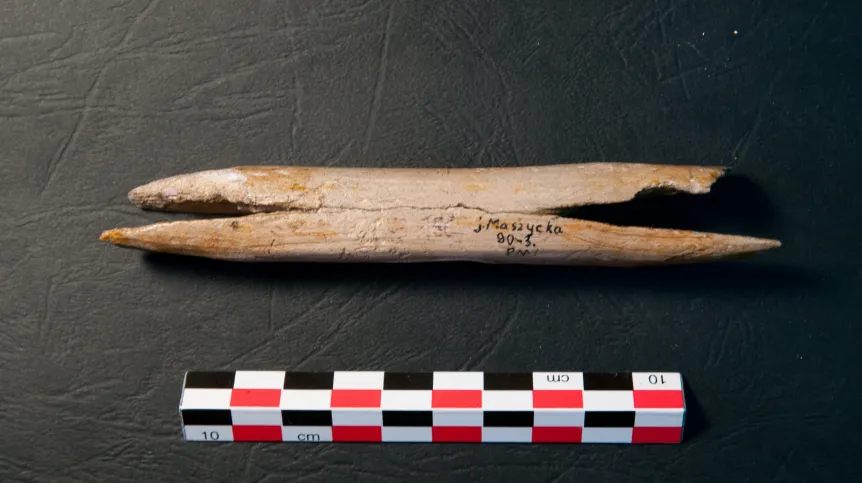
The latest analysis of over 60 bones from Maszycka Cave (Lesser Poland) shows that people living there 18 thousand years ago practiced cannibalism. This is indicated by traces on the preserved bones, including attempts to extract bone marrow, archaeologist Dariusz Bobak told PAP.
'Maszycka Cave is a very interesting site, and a very mysterious one. It is a remnant of a camp of a group of people who arrived 18 thousand years ago from Western Europe. They were representatives of a cultural unit that we call the Magdalenian culture', says Marta Połtowicz-Bobak. PhD, an archaeologist from the Department of Prehistoric Archaeology at the University of Rzeszów.
Prehistoric human bones were found in Maszycka Cave in the late 19th century. Magdalenian groups were known for using human bones as a raw material for making bowls and jewellery. However, scientists who conducted research on the use of human remains in the Upper Palaeolithic had different interpretations of the way in which this community used human remains.
The collection of human bones from Maszycka Cave has become part of this debate. Initial studies from the 1990s suggested that the population inhabiting the cave consumed human flesh, but subsequent anthropological studies from 2017 questioned this possibility.
Anthropologists from the Spanish Catalan Institute of Human Paleoecology and Social Evolution (IPHES) and archaeologists from the University of Rzeszów, the Rzeszów Archaeological Centre Foundation and the University of Göttingen have presented their latest analyses in Scientific Reports. They confirm the original assumptions. Research shows that the people living in the Cave practiced cannibalism.
'This is indicated primarily by micro-traces on almost all preserved bones. We identified micro-incisions in places that show that attempts were made to separate muscles from the bones. These are also traces of crushing, breaking up long bones in order to obtain bone marrow, which is a very caloric food. Traces on fragments of skulls indicate that attempts were also made to gain access to the brain, also very caloric', says the study co-author, Dariusz Bobak from the Rzeszów Archaeological Centre Foundation.
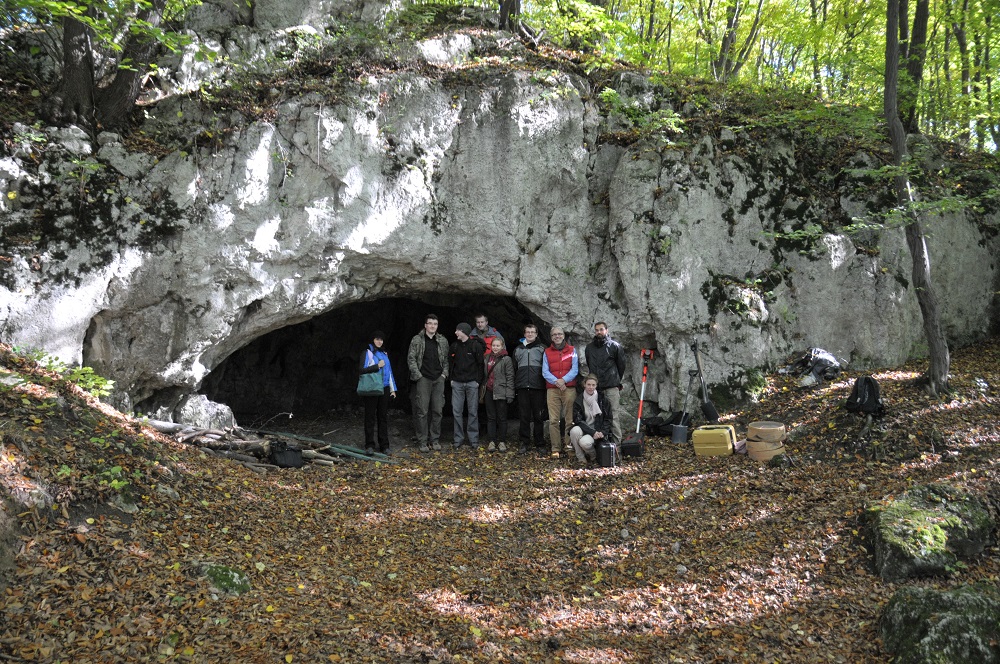
No traces were found at the site that would indicate that human bones were processed into tools and other utility items. The scientists examined 63 fragments of human bones.
'Based on the bone material, we can state that these are the remains of at least 10 people', says Dariusz Bobak.
The authors of the publication emphasise that such practices were also observed in other chronologically and culturally similar human groups throughout continental Europe. This suggests that cannibalism was an integral practice in Magdalenian groups. The examined bones include remains that had already been analysed in previous years, as well as those that had not been previously examined, or previously been identified as animal bones. All of them were made available for research by the Archaeological Museum in Kraków. Its collection includes artefacts from Maszycka Cave.
Detailed analyses were possible thanks to the use of state-of-the-art techniques, such as 3D scanning, which allowed to see traces that could not be identified a few years ago. It is not yet known for what purpose the inhabitants of Maszycka Cave obtained human meat. Archaeologists believe that it was probably not just about obtaining food.
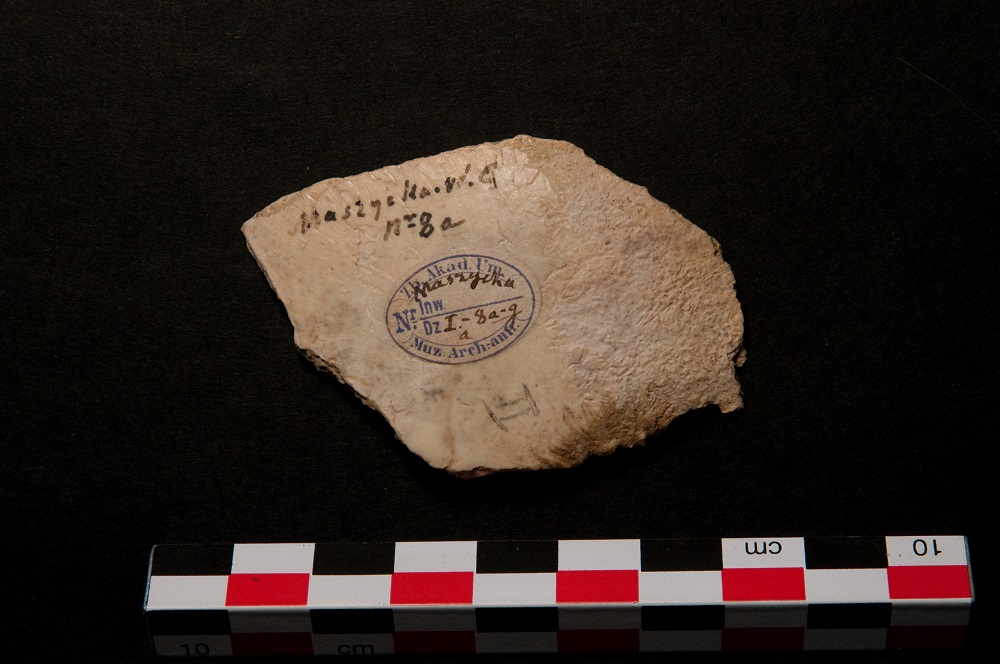
'In addition to human bones, numerous animal bones, bones of game animals, mainly reindeer, were also found at the site. They had enough food, it seems that cannibalism was not caused by hunger', Marta Połtowicz-Bobak believes.
Representatives of prehistoric cultures also practiced ritual cannibalism. They consumed the remains of loved ones to honour them, to gain their virtues. Ritual cannibalism also included eating the meat of an enemy in order to insult them even after death. The ritual meaning may be indicated, among other things, by the saiga antelope skull covered with ochre, discovered at the entrance to Maszycka Cave in the late 19th century.
'This red dye had ritual significance in all primitive cultures, practically until modern times. This suggests some kind of ritual associated with this place', says Dariusz Bobak.
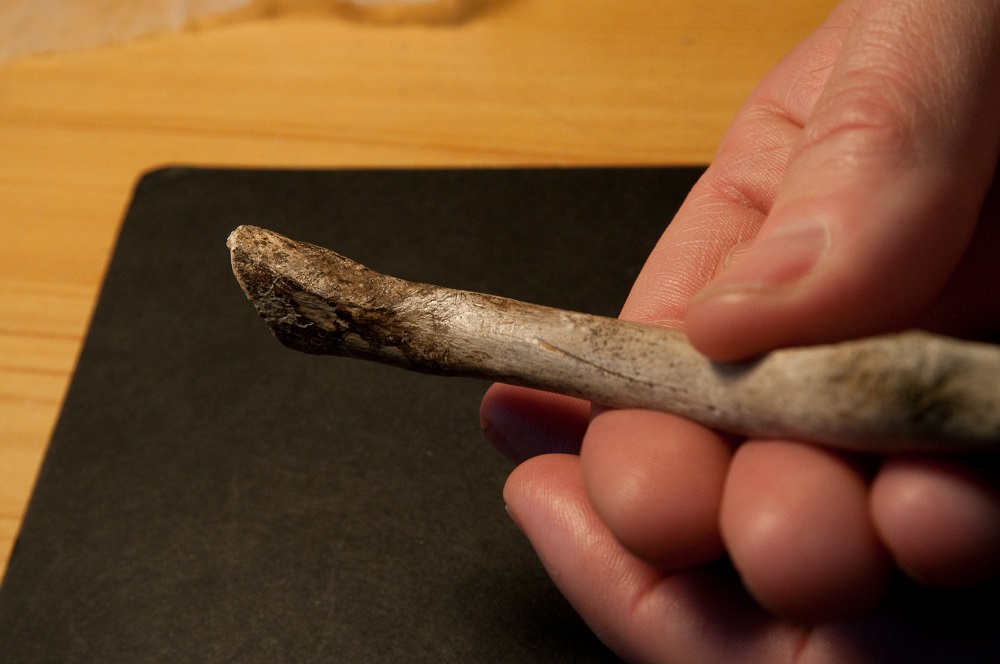
Połtowicz-Bobak described that the group's stay in the Maszycka Cave ended quite suddenly, but it is not clear why. The fact that it happened suddenly is evidenced by the fact that the act of cannibalism was probably a one-off event. 'It must have happened either at one time, or there were several acts that followed each other very shortly, perhaps within a few days', Dariusz Bobak describes.
In addition to human bones, a rich collection of bone tools was also found in the cave. Such tools are usually not preserved in such quantities at sites. 'Bone tools were valuable, they took much longer to make than flint tools, so no one just abandoned them unless they were destroyed. We have a whole collection here. So these people either died suddenly, or they escaped; in any case, leaving the artefacts indicates that something violent happened here', Bobak adds.
PAP - Science in Poland, Ewelina Krajczyńska-Wujec
ekr/ agt/ aszw/

